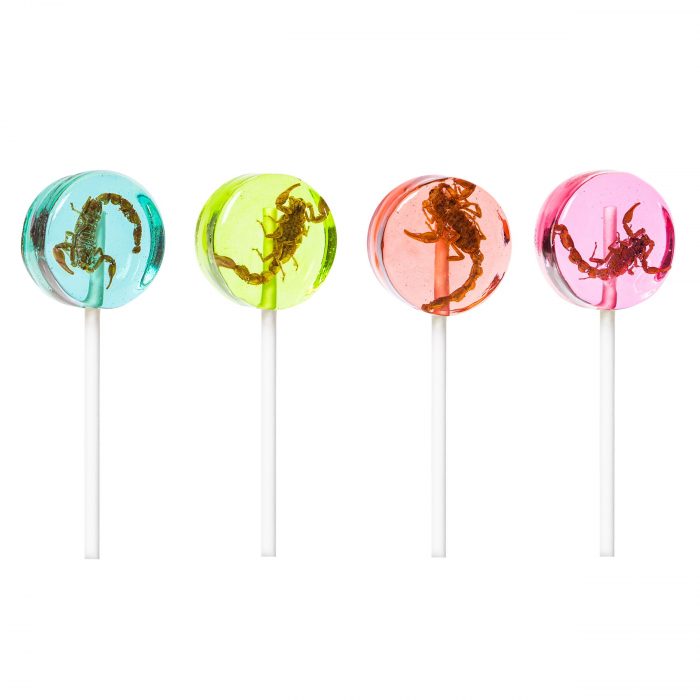The meat-alternative market is developing across the board—not just the traditional plant-based route. An AgResearch study revealed that over half of the Kiwis surveyed would be willing to eat insects—67 percent of the 1300 people surveyed. Are we likely to see insect-based protein slithering into normality within the next few years? Or is this just a passing phase driven by novelty?
In conversation with Matt Selak, director of Primal Future, and Matt Genefaas, director of Eat Crawlers and Tomorrow Foods, Restaurant and Café learned about the ins and outs of insect-based proteins, and what it could mean for our country/global ecosystem.

Matt Genefaas, Eat Crawlers.

Matt Selak, Primal Future.
“As of 2019, the population of humans on Earth is over 7.5 billion people,” begun Selak. “By 2100, the population is expected to be over 11.2 billion.” With this, Selak explained, comes an increase in the demand for food, especially protein. Additionally, with the amount of food-related shortages and issues across the world, there has to be a different approach if we are to support a population of this size. “Insects could be one solution due to their unique benefits and characteristics. They are very high in protein, have a high feed conversion rate, and they are a cold-blooded and efficient use of space.”

Tomorrow Foods Cricket Flour pancakes.
If insect-protein is to become the norm, there are, however, several hurdles to overcome. First and foremost, perhaps, is the perceived “ick factor”, as Selak described it. People in the West are not accustomed to eating creepy-crawlies, and the thought of them taking over a plate of steak or chicken breast on the menu is not something easily digested. But as Genefaas said, perhaps there are ways around this. “I don’t see a future of us eating bowls full of insects as meals, as we have been so privileged for so many years with traditional meat. With other meat-alternatives, that are perhaps more realistic, like the Impossible Burger and Beyond Meat products, I see insects more being used in conjunction with other ingredients, instead.” Both Primal Future and Tomorrow Foods have developed products that aren’t 100 percent insect but are instead infused with the protein and nutrients that insects can provide. There is also the question of logistics—can we envision a New Zealand dominated by insect farmers instead of dairy and sheep farmers? Unlikely in the near future, it seems, but perhaps not impossible.

Eat Crawlers Teriyaki Mealworms.
There are many benefits to farming insects. According to a 2013 Food and Agriculture Organisation to the United Nations, it requires 200m2 of arable land to produce 1 kilogram of beef—it only requires 15m2 to produce the same 1 kilogram of insect protein. Additionally, Genefaas said, “Insect farming and production creates less greenhouse gas emissions, as well as using minimal feed and water compared to traditional meat farming.” Farming insects also produces less waste and pollution, something that certainly crops up a lot in the debate between traditional red meat and dairy farming versus meat-alternative farming and production. “Another benefit of farming insects,” Genefaas continued, “is that you can quite literally do it anywhere and in any climate. Insect farming is done in a climate-controlled sealed environment to stimulate growth for the insects best. Furthermore, the land area required is significantly less, and when it comes to expansion, you can build up rather than needing more land.” If insect farming produces less waste, takes up less space, and is so much better for the environment, it seems possible that it will become more prevalent.

Primal Future's range of cricket-infused corn chips.
We wondered just how nutritionally beneficial insects are for you, considering their environmental benefits for the planet—turns out they are as equally good for us as they are the planet. According to the U.S. Department of Agriculture, a 200-calorie serving of crickets contains 31g of protein, 8.1g of fat, 1.8g of omega-3, and 7.2g of fibre. In comparison, 90 percent lean beef has 22.4g of protein (8.6g less), 11.2g of fat (3.1g more), 0.04g of omega-3 (1.76g less), and 0g of fibre. Furthermore, when compared to farmed salmon, crickets still stand up nutritionally. Farmed salmon has 20.4g of protein (10.6g less), 13.4g of fat (5.3g more), 2.5g of omega-3 (0.7g more) and 0g of fibre (7.2g less). In direct comparison, the statistics speak for themselves—insect-based proteins are incredibly nutritious. Furthermore, Genefaas said, “There has been recent research about the digestibility of proteins, and it confirms that insect-based proteins are much more digestible for the human body, too. Aside from traditional meat, there aren’t many single source foods that are a complete protein which makes crickets unique.”

Eat Crawlers Spicy Peri Peri Crickets.
So, what does the future of insect-based farming and production look like? And how likely is it that it will reshape the rest of the foodservice, farming and production industries? Selak used lobster consumption in the U.S.A. during the 1800s as an analogy. “When European settlers first came to North America, there was an abundance of lobster, reportedly washing ashore in two-foot-high piles. Their bountifulness made them a precious source of sustenance during hard times but gave them a reputation as the poor man’s protein. Insects have the same perception in the West, but in other parts of the world, like Asia and Africa, insects are a delicacy.” Eat Crawlers have been around since 2013, with Genefaas reporting doubled business growth year-on-year since then. That sort of increase speaks for itself but perhaps is in-part due to the novelty. While insect-infused produce may be beneficial in every way, there is still the question of marketability. People are becoming increasingly aware of what they are putting into their bodies, and how it is impacting the planet, so perhaps the future is one littered with insect-based proteins. The keyword, though, is future. Selak concluded, “My prediction is in 10 to 20 years the idea of introducing whole locusts to a Wednesday night stir fry as the protein source is considered normal as consumers will see the nutritional and environmental benefits.” While there is a likeliness of insect-based proteins becoming more dispersed throughout the foodservice industry, it is unlikely to overtake traditional meat options on the menu. On a practical scale, insect farming seems to be the way of the future, however unlikely it may look at this stage. It is hard to make predictions in terms of consumers adopting insect-based proteins, but the world needs a more sustainable alternative to widespread meat-farming, and insect-based proteins provide a way.

Eat Crawlers Chocolate Coated Tarantula.






